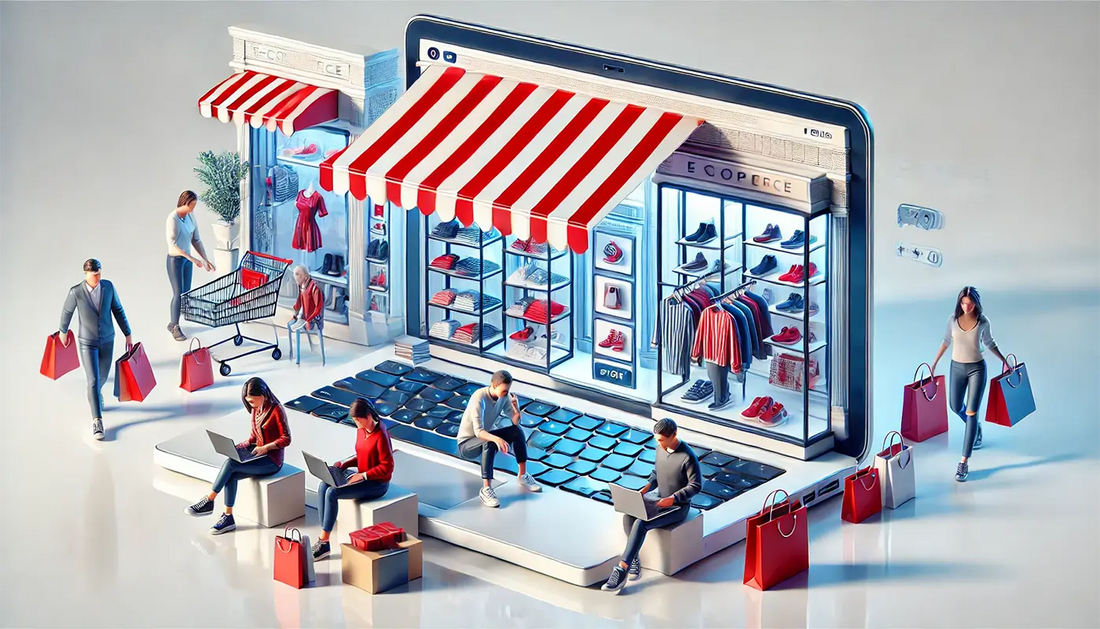
Ecommerce evolution: Key milestones that shaped online shopping today
The world of ecommerce has come a long way. Today, it is almost impossible to imagine life without the convenience of online shopping. But this wasn’t always the case. Ecommerce has evolved over several decades, influenced by key events and advancements that shaped how we shop today. Let’s explore the ecommerce evolution: Key milestones that shaped online shopping today.
The beginning: Birth of ecommerce
Ecommerce began in the late 20th century. The first significant event took place in 1979 when Michael Aldrich invented online shopping by connecting a television to a transaction-processing computer via a telephone line. This paved the way for the development of online shopping systems. By the 1990s, the internet had become accessible to the public. This era saw the birth of some early ecommerce players, which set the foundation for the growth of the industry.
In 1994, a major milestone was reached. Amazon was founded by Jeff Bezos, initially as an online bookstore. Around the same time, eBay also started its journey. Both companies played a pivotal role in making ecommerce popular and accessible to consumers worldwide.
The rise of secure online payments
The next major step in ecommerce evolution came with the rise of secure online payment systems. In 1994, Netscapeintroduced Secure Socket Layers (SSL) encryption, which ensured that transactions over the internet were secure. This was crucial in gaining customers' trust, as online transactions were viewed with skepticism at the time.
By 1998, PayPal entered the scene, offering a safe and convenient way to make payments online. PayPal made transactions smoother for both buyers and sellers. The growth of secure payment options encouraged more consumers to try online shopping without the fear of losing their financial information.
The dot-com boom and bust
The late 1990s saw the dot-com boom. Many businesses, big and small, launched ecommerce websites. Investors poured money into online ventures, hoping to capitalize on the growing popularity of the internet. Companies like Pets.com and Webvan emerged, promising a revolution in how people shopped.
However, by 2000, the dot-com bubble burst. Many ecommerce businesses failed, unable to turn investments into profit. Despite the bust, the survivors learned valuable lessons. Amazon and eBay not only survived but thrived, learning how to adapt and innovate during tough times. This period tested the resilience of ecommerce and laid the groundwork for future growth.
The rise of online marketplaces: Ecommerce evolution milestones
Another key milestone was the rise of online marketplaces. Alibaba, founded in 1999, changed the face of ecommerce in China and soon globally. Unlike Amazon, Alibaba focused on connecting manufacturers with consumers, helping small businesses access a wider market.
Etsy launched in 2005, carving out a niche for handmade and vintage goods. Marketplaces gave consumers more choices and allowed small sellers to reach audiences they could never have accessed otherwise. The marketplace model became a vital part of ecommerce, giving both buyers and sellers more opportunities.
Mobile commerce: Shopping on the go
The growth of smartphones led to the rise of mobile commerce (or m-commerce). In 2007, Apple launched the first iPhone, which revolutionized how we interact with technology. Soon after, mobile apps became popular, and businesses began developing ecommerce apps to reach customers on the go.
Consumers loved the convenience of browsing and buying from their mobile devices. Companies like Amazon, eBay, and Alibaba quickly adapted to this trend. The introduction of Apple Pay and Google Wallet made mobile transactions even more convenient. By the 2010s, mobile commerce became a crucial part of the ecommerce experience.
Social media and influencer marketing
The rise of social media platforms like Facebook, Instagram, and Pinterest played a huge role in shaping ecommerce. Businesses realized they could use social media to connect directly with customers, promote products, and even sell through these platforms.
Instagram Shopping and Facebook Marketplace allowed users to browse and buy products without leaving the app. Influencer marketing also became a popular way to promote ecommerce products. Influencers, with their massive following, helped brands reach niche audiences. Social media blurred the line between browsing and buying, making online shopping more integrated into our daily routines.
The role of Amazon Prime
In 2005, Amazon launched Amazon Prime, a membership service that offered free two-day shipping. This changed consumer expectations regarding delivery speed. People began to expect faster shipping options, and ecommerce businesses had to adapt. Today, Amazon Prime has millions of subscribers, and fast shipping is a key selling point for many online retailers.
The COVID-19 pandemic: Accelerating ecommerce growth
A more recent milestone in ecommerce evolution was the COVID-19 pandemic. During lockdowns, consumers turned to online shopping more than ever before. Essentials, groceries, and even furniture were purchased online. Businesses that had an online presence thrived, while those without one struggled to catch up.
The pandemic accelerated the growth of ecommerce by several years. Companies like Zoom and Shopify saw significant growth, helping businesses connect with consumers online. The need for contactless shopping led to innovations like curbside pickup and improved delivery services. Ecommerce became the default for many during this period.
The future of ecommerce
Ecommerce is still evolving. Technologies like artificial intelligence (AI), virtual reality (VR), and augmented reality (AR) are shaping the future of online shopping. AI helps personalize the shopping experience, while AR allows customers to visualize products before buying them. Voice commerce, through devices like Amazon Echo, is also gaining popularity, making online shopping even more convenient.
The focus on sustainability is another trend. Consumers are becoming more aware of their environmental impact, and ecommerce businesses are finding ways to reduce carbon footprints. Innovations like drones for delivery and electric delivery vehicles are becoming more common as companies aim for greener solutions.
Conclusion: Ecommerce evolution milestones
The evolution of ecommerce is a fascinating journey. From the first online transactions to the rise of mobile commerce and social shopping, ecommerce has continuously adapted to meet consumer needs. Today, online shopping is not just convenient; it is an essential part of our lives. As technology continues to advance, the future of ecommerce looks even more promising, with endless possibilities for innovation and growth.
Ecommerce has come a long way, and its journey is far from over. With every new development, it becomes more integrated into our daily routines, making shopping easier, faster, and more enjoyable.
Image Courtesy: ACCENTERRA
Did you find this blog post helpful? Got ideas or questions? Join the conversation below! Your insights could help others too, so don’t hesitate to share!
Please note that all comments will be moderated before being published.
